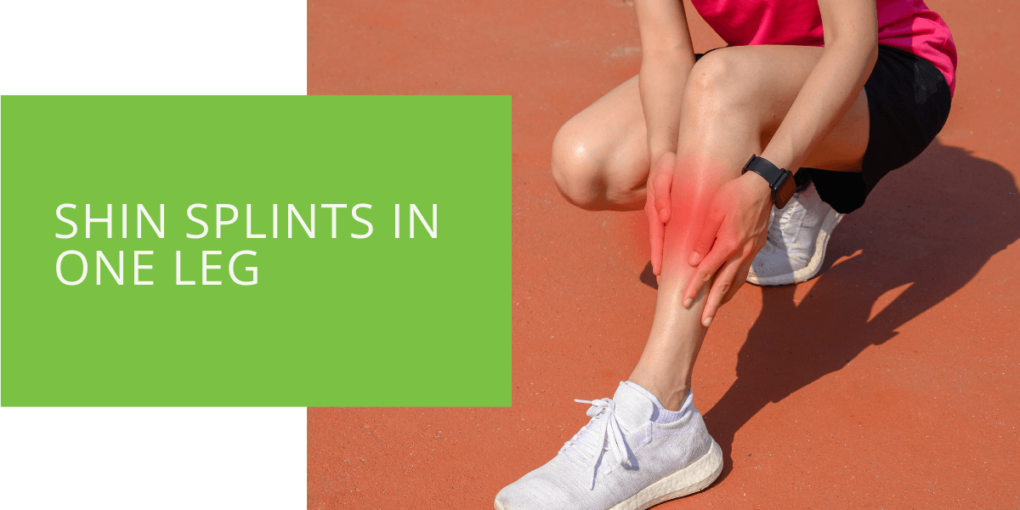Shin Splints in One Leg
Experiencing pain and discomfort in one leg due to shin splints can be frustrating and limiting. Whether you're an athlete or someone who leads an active lifestyle, shin splints can significantly impact your ability to engage in physical activities. This comprehensive guide aims to provide valuable insights into the causes, symptoms, prevention strategies, and treatment options for shin splints in one leg. By understanding the intricacies of this condition and implementing effective measures, you can alleviate pain, promote healing, and regain your active lifestyle. Let's explore the world of shin splints and discover how to overcome this common lower leg ailment.
Understanding Shin Splints
Shin splints, also known as medial tibial stress syndrome, are a common condition that causes pain and discomfort along the shinbone (tibia) in the lower leg. This article explores the causes, symptoms, prevention strategies, and treatment options for shin splints in one leg.
Diagnosing Shin Splints
A podiatrist or healthcare professional will conduct a thorough medical history assessment and physical examination to diagnose shin splints. They may also order imaging tests, such as X-rays, to rule out other possible conditions, including stress fractures.
Symptoms and Causes of Shin Splints
Shin splints are typically characterized by pain, tenderness, and swelling along the shinbone. These symptoms often occur due to overuse, improper training techniques, and biomechanical factors. Engaging in high-impact activities, such as running or jumping, on hard surfaces can increase the risk of developing shin splints.
Preventing Shin Splints
Prevention plays a crucial role in managing shin splints. Implementing certain strategies can help minimize the risk of developing this condition. Gradually increasing the intensity and duration of physical activity, incorporating proper warm-up and cool-down routines, wearing appropriate footwear with cushioning and arch support, and avoiding hard surfaces can significantly reduce the likelihood of developing shin splints.
Shin Splints Treatment
Non-surgical treatment options are typically recommended for shin splints. Resting the affected leg and avoiding activities that exacerbate pain is essential. Applying ice packs and compression to reduce swelling and elevate the leg can provide relief. Physical therapy exercises and stretching routines may be prescribed to strengthen muscles, improve flexibility, and correct biomechanical abnormalities.

Addressing Pain and Swelling
Managing pain and swelling associated with shin splints is vital for comfort and recovery. Over-the-counter pain relievers, such as nonsteroidal anti-inflammatory drugs (NSAIDs), can help alleviate pain. Icing the affected area for 15-20 minutes several times daily can also reduce swelling and inflammation.
Proper Footwear and Orthotics
Choosing appropriate footwear is crucial in preventing shin splints. Opt for shoes with adequate cushioning, arch support, and shock absorption to reduce the impact on the lower leg. Custom orthotic devices may sometimes be recommended to provide additional support and correct biomechanical issues.
Gradual Return to Activity
Returning to physical activity after recovering from shin splints should be done gradually to prevent recurrence. Cross-training exercises and low-impact activities, such as swimming or cycling, can help maintain fitness levels while reducing stress on the shins. Listening to your body, paying attention to any discomfort, and avoiding pushing through pain is essential.
Seeking Professional Help
If shin splint symptoms persist or worsen, it is advisable to seek professional help from a podiatrist or healthcare provider. They can provide an accurate diagnosis, develop a personalized treatment plan, and offer guidance on preventing future occurrences. They may recommend advanced treatment options in severe or chronic cases, such as physical therapy, specialized exercises, or orthopedic interventions.
Conclusion
Shin splints in one leg can cause significant pain and discomfort, hindering daily activities and sports participation. Individuals can effectively manage and overcome shin splints by understanding the causes, recognizing the symptoms, implementing preventive measures, and following appropriate treatment strategies. Remember to consult a healthcare professional for an accurate diagnosis and personalized advice tailored to your condition. With proper care, you can alleviate pain, promote healing, and return to an active and pain-free lifestyle.
Key Takeaways
- Shin splints in one leg can cause significant pain, tenderness, and swelling along the shinbone, impacting daily activities and sports participation.
- Preventive measures such as gradually increasing activity, proper warm-up and cool-down routines, and appropriate footwear can help minimize the risk of developing shin splints.
- Non-surgical treatment options, including rest, ice, compression, physical therapy exercises, and proper footwear, are vital in managing shin splints and promoting healing.

